Mentally safe(r) spaces on stage and beyond: recognising danger(s) in circus and speaking up!
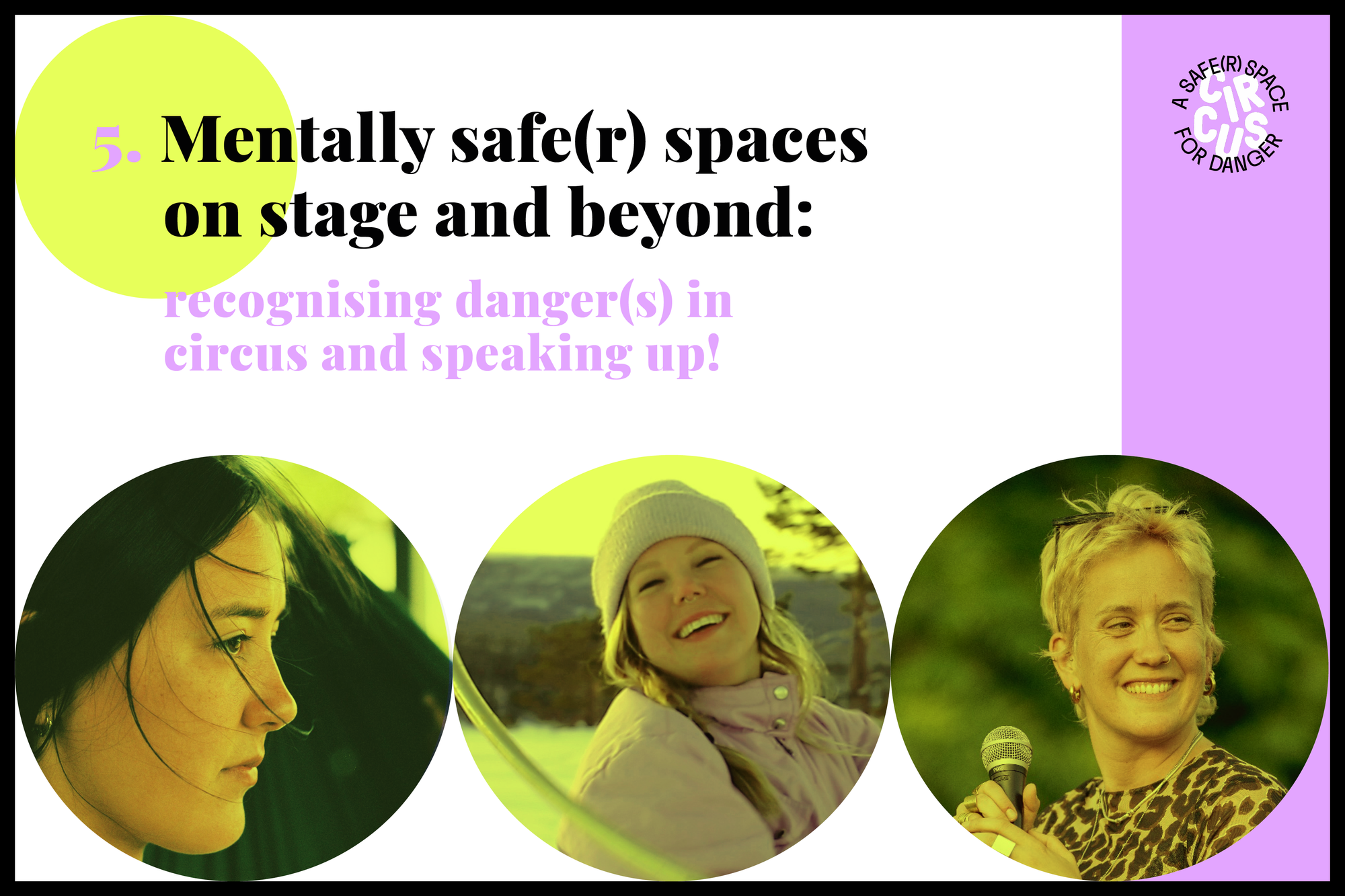
Circus artists share the experience of being physically held by others. They are trained to trust their bases, to collaborate physically and to always catch if someone falls. The aesthetics of risk still occupy a large part of the dramaturgical discourse in circus and physical safety is often investigated and implemented as the (only) core of the artistic work. However, ‘safety’ is an umbrella term that includes mental and emotional aspects that contribute to building well-being, and impact the artistic forms being produced on stage and which circulate as public imagination. During the international conference, Circus - a safe(r) space for danger, artists and activists Amanda Homa and Miradonna Sirkka gave a powerful workshop I attended as a participant. This article is a dialogue on the importance of recognising either the oppression we might be suffering or the oppression we might be delivering in our workplace. Mentally and emotionally safe spaces cannot be created without tackling gender issues, White supremacy, and power hierarchies.
Gaia: What is a safe space for you? Could you give a short definition?
Miradonna / Amanda: A safe space is a space where a person can be themselves and feel free to express even the embarrassing and sensitive stuff. It is a place (or state of mind?) where one’s boundaries are taken care of and respected, where someone is challenged and questioned and the overall communication is direct. Where the situation allows mistakes and is respectful also of those who are not present. I still don’t know what the term ‘safe space’ is but here it is… Since diving deep into creativity needs trust and trying out, the feeling of safety is crucial for us in artistic work. A safe space is an environment that is not judgemental but more encouraging toward experimentation, where everyone is free to express themselves without ever forgetting our responsibility towards others and against discrimination.
Gaia: How did you come up with the idea of working together? How does the workshop you proposed relate to your work as an artist?
Miradonna: Amanda and I met in a circusnext laboratory in Italy and went through the whole circunext process up until the selection week with our projects. I felt a very fast strong resonation with Amanda’s thoughts and I felt like we could talk honestly and openly. I think there was a strong bond and that is quite a rare thing to happen so I was and still I am super happy about that.
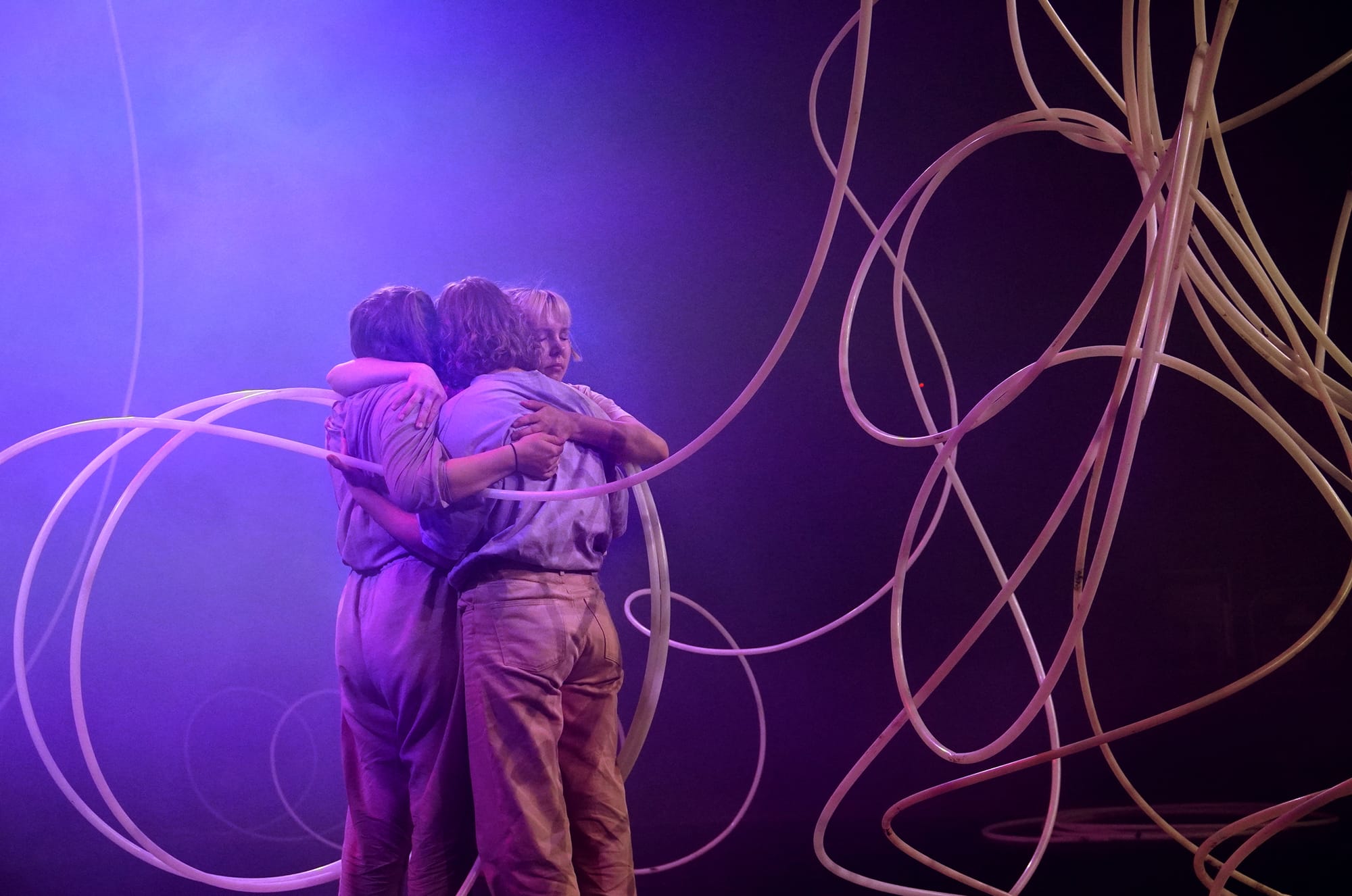
I am based in Finland, Helsinki, so my perspective might vary from the central European circus context. I am not directly working with Safer Space guidelines but it has been an essential tool in my work. I am one of the people running the company Recover Laboratory in Finland. Our crew consists of artists from various art fields with different backgrounds, so to make it work we needed to find tools. In our works, the core themes are human connection and the feeling of being seen and heard. To be able to work in unconventional spaces and on a one-to-one basis one needs to consider consent and safety. So the ‘safe space’ consideration has been a topic for a long time because of the forms the artworks take. Also within the group, we have some kind of family-like relationships, taking care of each other and offering a safe platform to express oneself as they are, regardless of gender, sexuality etc. That’s how the safe space (and questioning it) became part of our work. Questioning norms both on stage and in daily life is a topic in my artistic work for sure, not directly but bubbling under the surface. I constantly try to find alternative ways to meet the audience and be on stage or in unconventional spaces. Suddenly queerness, gender and sexuality became a ‘thing’ and it seemed like me and other RecLab crew started to be someone to ask for advice, workshops and panel talks because it leaked out that we were already working with these topics.
Amanda: For me, artistic work cannot be conceived outside the values made explicit by the workshop. If you don’t think about them, you are most likely just reproducing the mainstream values of the dominant system. This workshop has just been a way for me to talk about it openly in a professional context, but what we proposed is something that is always an important part of my work, somehow. Even if I’m not bringing it up clearly on the stage, I am always thinking about these things while creating. This was a big topic for me in my last personal creation as I was collaborating with a White-European-cis-man and I’m a racialised South American cis-woman, and I got to experience and realise that this is NOT something we choose to talk about or not in the work. Those questions are always there, you can only decide HOW you’ll deal with it and talk about it, even if the artistic work seems to have nothing to do with it. Because when you don’t think about it and you just ‘go with the flow’, I noticed how often and easily we are just reproducing the dominant system and embed the same problems in our practice and productions even if we don’t agree with them.
Gaia: Does Whiteness/non-Whiteness bear on your circus work in Europe? How has it affected your artistic work so far?
Amanda: It does, but it is not because it is circus work, but because it is work in Europe. Working in Europe as a non-White and non-European person bears on everything. Of course, in Brazil, the issue was already there, but I occupy such a different social position in my country that I guess I was blind and ignorant about it. Moving to Europe changed my social position and that experience has been a really powerful tool to understand the systemic problems that suddenly you start facing, and it’s puzzling and frustrating. So, I got to a point where I needed to do something, I needed to share this with others and to speak out. But now I also notice that when you start talking publicly about the issues of racism and discrimination, you become the annoying person always putting it on the table. But you can experience a kind of pressure in the aesthetic expectations on your artistic work on stage as well - like it had to be clearly activist and political - but most of the time my work does not meet those expectations and this can be a small shock because your identity kind of becomes fragmented and I find it very weird and unuseful.
So, in this sense, yes, I feel it had an impact on me and my work as I needed to legitimise myself even more in the work I want to do and how I truly believe it’s quite political even without the common ‘ activist aesthetics’. Sometimes I experience that contradiction, but I resist and stick to my gut feeling to keep creating - on stage and beyond.
Miradonna: White supremacy is definitely affecting the circus field, yes. As Amanda said, circus is not its own bubble out of society, it is definitely part of it and connected. So for sure, I benefited from my Whiteness and it gave me a lot of privileges in my work and in my daily life. I started circus as a 7-year-old in Northern Finland. In Finland, we have relatively good social security and being a White, beauty norms-filling, able-bodied Finnish person is a big privilege that certainly affects work possibilities, the types of roles played, etc etc.
Circus Whiteness starts from the youth circus thinking about who is encouraged to become a professional performer: who is represented on stage and who is not? For a White person, the economic and social risk is relatively smaller. This has a direct effect on who is becoming a professional and who is not.
As a performer, i.e. as a person who has visibility and power, I feel a responsibility to notice my privileges and shine a light on them also in my artistic work. For me it has been mainly about gender and sexual representation, breaking the hetero-normativity. Instead of reproducing society as it is at the moment, I try to create alternative worlds that stretch our understanding of what is normal. This has led my art to be seen as a person “pushing boundaries” I guess, even though I dislike the term and do not aim for that.
When you work with one minority, you start to understand the bigger picture of oppression. But the opposite could also be true, that is, a white person is so into their own path, that they forget the privileges present. That is what intersectionality is about and what Amanda was explaining very well during the workshop: each White person needs to understand their privileges, internalised racism and question oneself, while also making mistakes and learning.
Gaia: How much do you think that Whiteness contributes to building structural violence in the circus? To what extent does the circus industry take advantage of racialization?
Amanda: Whiteness definitely contributes to the structure of violence in circus, because this is what Whiteness is about: it is not about people’s skin colour but about gathering power in the hands of certain groups of people and thus oppressing and dominating some other groups, and that can only exist in an unbalanced power relationship.
It would be so pretentious to think that circus is outside of the world's dynamics. Circus is inside something bigger, that is the dominant culture, and many of its mechanisms have been internalised by White people. We cannot claim to be outside if we are not aware of those dynamics and if we are not proactively fighting against them.
Talking about central European circus where most of the well-known professional schools are, I feel that there is a huge attraction to many different cultures and countries. Europe is harbouring a lot of rich cultural diversity and creativity from all over the world, which is brought in by the people who come to Europe to train and learn circus. But this is never really recognised by Europe the other way round: diversity is often taken for granted. The narrative is often “Oh there’s many cultures and languages in the circus” but when it comes to the field of work, if you look closely you can see who’s really been able to create in good conditions and have their work recognised and supported, and it is very often White-Europeans. This is not because we BIPOC people are going back to our countries: many stay in Europe but we never have the same career progress as a White-European person. Why? The imbalance of power that hinders the circus career of a non-White person, to me, is real proof of how much the European circus industry is taking advantage of racialization.
Miradonna: Structural violence is everywhere, not only in circus. When you start to think about it you can not close your eyes anymore. So yes, definitely circus does it too. White supremacy is visible (this is only one example) for example in the moments talking about taste and bookings. What shows are booked and which are left out? I think there is A LOT of work to do when it comes to power hierarchies and how the people in power positions are rating the shows that will be supported. White European taste (in our case Scandinavian minimalism) is not the only way to go and that should be challenged. Circus performances that challenge the norms can be seen as a risk, but what if risk is an opportunity? How to change the mindset from seeing risk everywhere to opportunity and support?
We should constantly challenge our own taste and accept that White people do not understand and do not have to understand everything or be involved in everything. This I can see a lot in many circus events, what kind of shows the public is seeing and what they are not. How to support the shows that do not fit in? How to support the performers who are not fitting in?
I think we are now in an era where people are cancelled and that is scary. So it might be easier not to talk about Whiteness and structural violence because it is awkward to notice that many things that White people did have taken advantage of racialization. Hopefully this changes. The people who have the resources could for example do what the Safer Space Conference was trying to do, to educate and question. This could also be part of artistic processes.
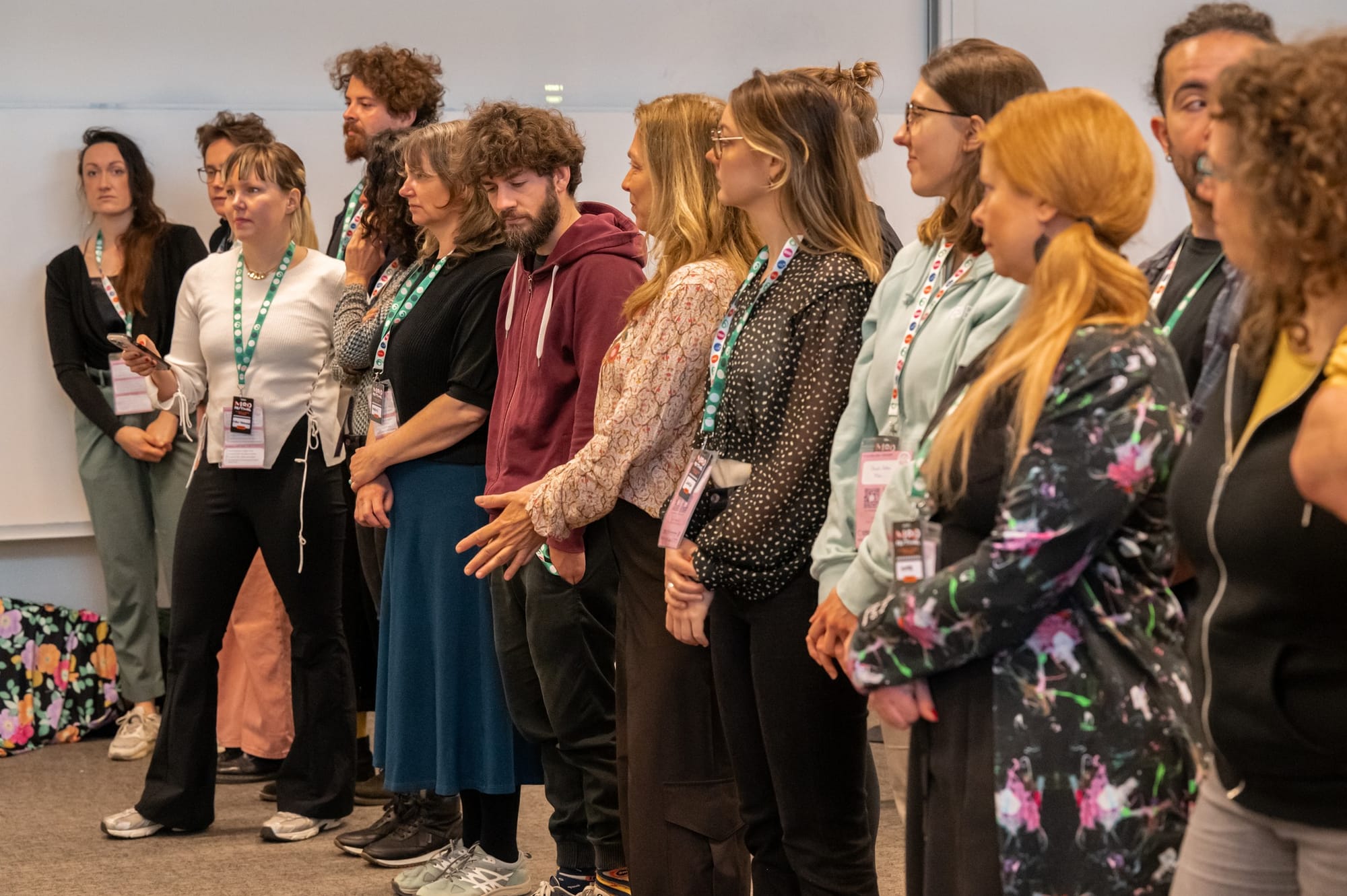
Gaia: Speaking as a White person, I think that one problem with Whiteness is that we have built a cultural system that does not question Whiteness. We perceive our (colonial) model as universal and unless we take into serious account the options of decoloniality, we’ll keep perpetuating oppression through narratives such as diversity and inclusion that seem to open new ways but reinforce the neoliberal flaws. Can White people become allies or complicit? To what extent? How?
Amanda: I cannot answer it myself because this has to be created together and people who want to change this system have to take the risk of the relationship. We need to build alternatives together and not simply find solutions. It just doesn’t work like that. It would feel very wrong to me if it was only up to non-White people to solve the problem and give the answers, “Yes, you can do it and this is how you do it”.
Non-white people don’t all agree on how things should be done or about white people’s behaviours. I experience it often with a very close friend of mine. There are many situations she feels angry about but I don’t, or the opposite. We are not a group with united values and ideas, we are different people under some shared labels that expose us to similar structural violence. So, as with everything, it depends: some people could become allies, some could not. Some want to, some don’t. Also, many factors impact the situation: social class, sexual orientation, gender etc…intersectionality! I believe that we should practise receiving and giving feedback, and learning how to be strong enough to take the risk of the relationship to find alternatives. And always be ready to ask yourself the question “How can I repair it if I harmed someone with my idea?” But here’s how. There is no can or cannot. For me, it’s about engagement and responsibility and not permission.
Miradonna: It is not about the question of can we, it is that we have to. Decolonisation must happen and it has to be done among white people too because they are the ones oppressing. We are already witnessing a huge climate change, wars and genocide that are straightforward consequences of White supremacy. We should actively fix ourselves, question and be loud, clumsy and make mistakes. It is like learning a new skill because of how we have been taught by our parents, grandparents etc. Intergenerational behaviour takes time to change.
Amanda: Gaia, what did you think was the most impactful moment in the workshop and why?
Gaia: The most impactful moment was when Carlos, a Venezuelan, non-White person, said that he chose to attend the workshop because it was the only one in the whole conference that was held by a non-White person. It was an insightful moment that made me realise three things: 1. how much space we White people keep occupying even when we have the best intentions 2. the fact that people might not desire to be part of our White-world 3. White culture often makes proposals on themes that (often) regard non-White people as targets or objects, rather than as active subjects.
Gaia: Amanda, in this sense, how much does consent relate to the narrative of inclusion that is now broadly occupying the European cultural discourse in the arts?
Amanda: Consent is what we are really missing about the narrative of inclusion in my opinion. Inclusion doesn’t take into account what people want. If they want to be in a place, if they want to be part of something or not, if they want to be included in what you are offering or not. You have to make sure that people consent to the thing you are going to offer to make it impactful. What do people want? Do they want to be included in this institutional, White, rich thing that is the art system in Europe? If they don’t, then what? What can you do? There are people I know that want space and money to do their work but they don’t want to be included in what’s already happening because they don’t agree with what’s already happening in the cultural institution. Consent is such an important thing to remember in all the subjects of discrimination and inclusion. Inclusion is good for all those who want to be part of it but not for everybody.. So we also need to remember that rather than working only for inclusion, we also need to work against discrimination. Because some people do not want to be included in the White system: they just want the violence to stop, but they’ll be choosing their alliances on their own and you may be out of it and that’s okay.
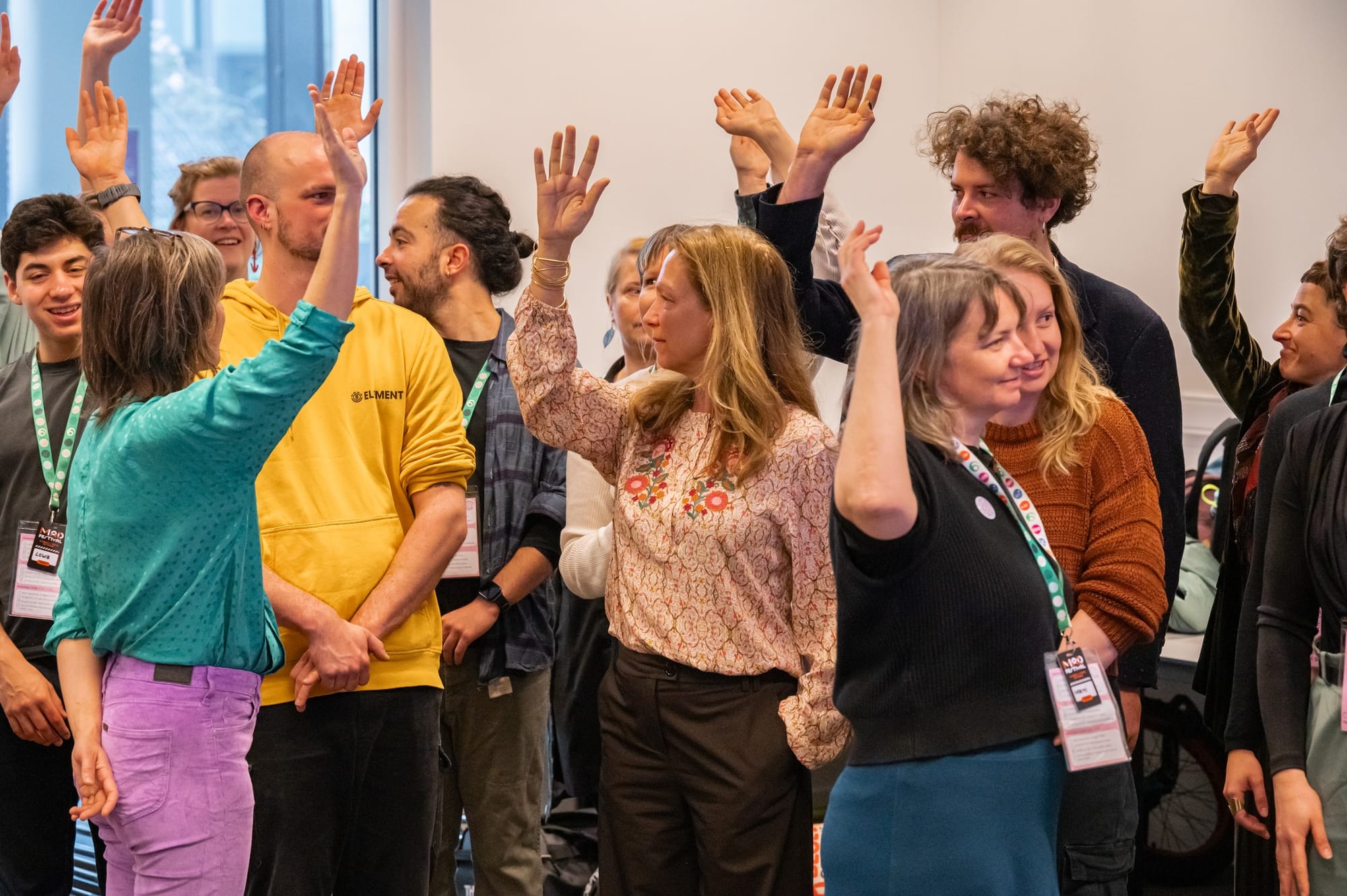
Amanda: Gaia, how did you feel during the workshop? Did you feel something new from doing that in a circus institutional space with unknown people, not only friends? Did it feel new for you?
Gaia: It felt great and new for me. A breath of fresh air. Coming from a very conservative country where circus is still on its way toward legitimisation (and professionalism) and where a feminist discourse in circus is lacking, for me as a person and as a professional it was extremely nourishing to talk about these topics within the circus field. Your workshop for me was a gentle and playful space for self-compromising and the fact that the other people were professionals and not friends added value to that. Because to me it is more difficult to self-compromise in front of people you love and so I felt more free to do that in front of people I didn’t know. To self-compromise, which is an attitude that I think we should train, we need non-judgmental spaces that allow for that, and to me, that was what the workshop was about: it shaped a “blank” and playful arena to be free from affective conditioning, and where each of us could feel free to scan our own privileges in mutable relational contexts and different levels of depth.
Miradonna: Did you continue processing the topics of the workshop later? How? Was there something in particular that had an effect on you that you implemented in your daily life/work?
Gaia: Your starting statement “It’s not about if you are racist, it’s about how we are racist” still resonates with me. There is a level where we are the same but other layers where we are profoundly unequal and where we are incomparable. Being put in the condition of publicly questioning my privileges was a precious gift for further reflection. Also, the topics you raised are so urgent to me now. I am thinking about how to bring those discourses into the Italian circus community: for example, I am thinking of developing this year’s edition of my project La Parola ai Corpi 2024 around the theme of privilege and consent. Also, I bought three of the books you suggested. Decolonising my reading habits is my long-term goal at the moment.
Miradonna: Gaia, how did it feel to participate in the workshop? Could you name any emotions that you felt during/after the workshop?
Gaia: Discomfort, gratitude, will to change.
Resources
This is a non-exhaustive list. These references have been used to build the workshop by Amanda Homa and Miradonna Sirkka at the conference Circus - a safe (r) space for danger in 2024.
Example_space policy
This is an example copied from Recover Laboratory’s Space Policy. This can be copied and edited for each space's needs. These guidelines are designed to make space and events feel like a meaningful place to work and be together. The guidelines will be adapted together as necessary. The responsibility for maintaining the space rests with each space user and event participant.
Download the example and get started.
Books and texts
- Gender Trouble: Feminism and the Subversion of Identity by Judith Butler
- Sad Girl Theory by Audrey Wollen
- 21st Century Media and Female Mental Health by Fredrika Thelanderssson
- Love as Political Resistance by adrienne maree brown
- Pleasure Activism. The Politics of Feeling Good by adrienne maree brown
- Sister Outsider: Essays and Speeches by Audre Lorde
- Butch Queens Up in Pumps: Gender, Performance, and Ballroom Culture in Detroit by Marlon M. Bailey
- Perform, Repeat, Record: Live Art in History by Amelia Jones
- We Will Not Cancel Us by adrienne maree brown
- White Fragility by Robin DiAngelo
- Ain’t I a woman? by bell hooks
- The Racial Contract by Charles W. Mills
- L’Opposé de la blancheur by Léonora Miano (FR)
- Place of Speech by Djamila Ribeiro
- Se défendre, une philosophie de la violence by Elsa Dorlin (FR)
- Conflict is not abuse. Overstating Harm, Community Responsibility and the Duty of Repair by Sarah Schulman
- Restituer le patrimoine africain by Felwine Sarr and Bénédicte Savoy (FR)
- À qui appartient la beauté ? by Bénédicte Savoy (FR)
- A Tale of Monstrous Extravagance: Imagining Multilingualism by Tomson Highway
- Postcolonial Love Poem by Natalie Diaz
- Xenofeminism. A Politics for Alienation by Laboria Cuboniks
Podcasts and videos
- adrienne maree brown - podcasts
- Critical diversity Podcast: How to create safe space I: Code of ConductDiAngelo
- Office of Public Lectures, UW Episode Robin DiAngelo: White Fragility
- The urgency of intersectionality - Ted Talk by Kimberlé Crenshaw
- Kiffe ta race Podcast (FR) - Afrotopiques
- La Poudre (mostly in FR but with ENG episodes!)
episode Vandana Shiva
episode Sarah Schulman
episode Maggie Nelson
Biographies
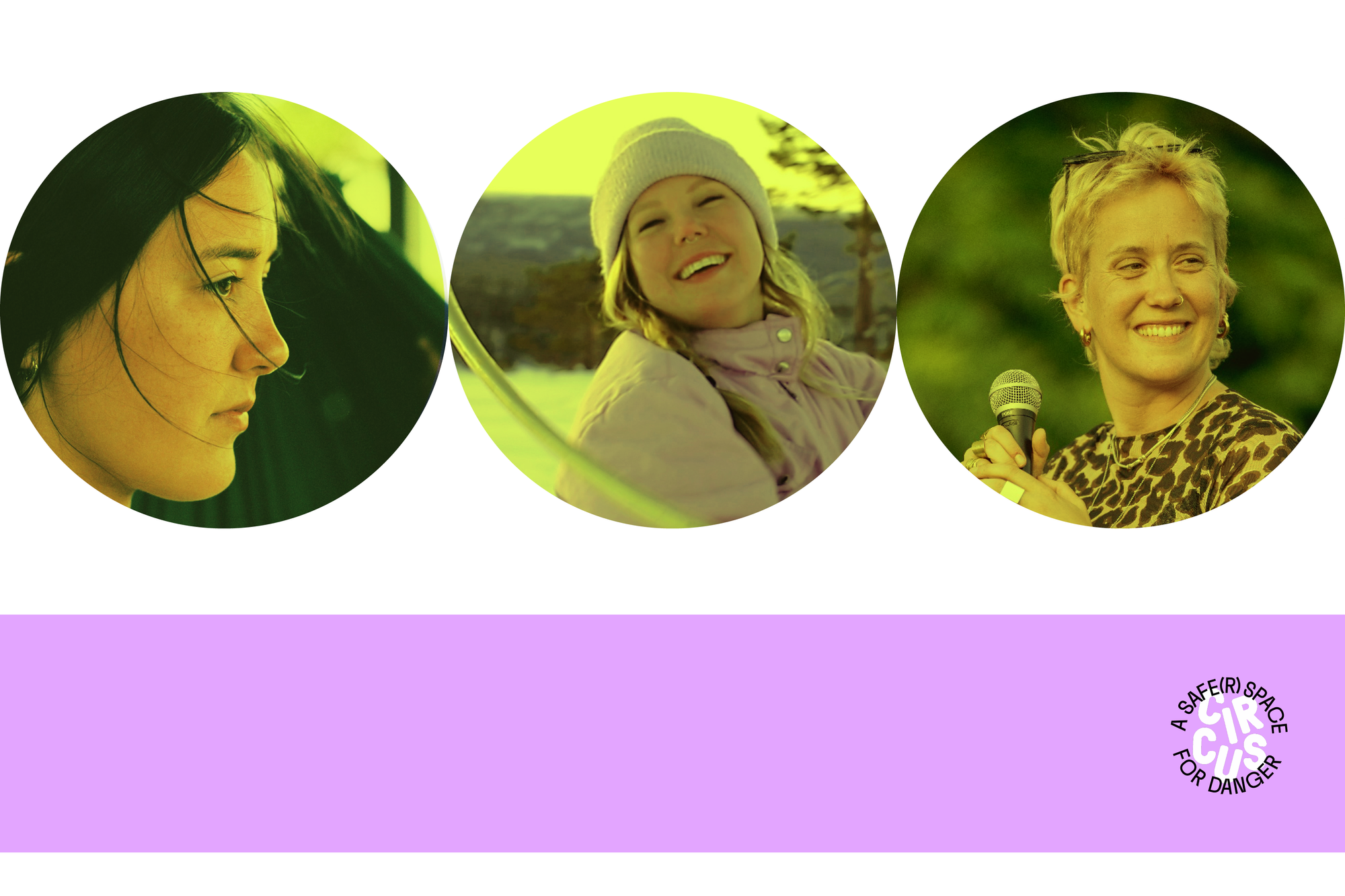
Amanda Homa (she/her) is a Japanese-Brazilian artist based in France since 2014. She trained at CEFAC (br), FLIC (it) and Le Lido (fr). After she graduated, she collaborated as a performer with different companies. In 2021, she co-founded her own company, Diagonale du Vide. She works as a translator in Le Lido with the first-year students during the auditions and BodyMindCentering® workshop to create more equal access to knowledge. She has taken part in different group discussions and panels about inequality of opportunities and lack of representativity in the art field (events organised by La Grainerie, Festival Circolo, PepperMint workshop). Her main focus is intersectional feminism and how to imagine repairing historic oppression in the working structures of the cultural field.
Miradonna Sirkka (she/her) is an artist, director and the founder of the multidisciplinary art company Recover Laboratory. Recover Laboratory is a pioneer of Finnish immersive art experiences founded in 2015 and based in Helsinki. Her artworks have been seen both internationally and in Finland on and off stages and exhibition spaces. Being a queer art activist is a full-time job. In her artworks, she suggests alternative ways of being, living and seeing.
Gaia Vimercati (she/her) is an independent researcher and cultural project manager of Quattrox4, a contemporary circus centre in Milan. She received an MA in Comparative Literature at Trinity College Dublin (2015). She created Censimento Circo Italia, the first map of circus companies in Italy (2016). She published 'Chaplin, Brecht, Fo: toward a concept of epic clowning' in the book 360° Circus. Culture. Meaning. Practice (Routledge) and several contributions about circus for magazines and journals. In 2021 she participated in a residency program at La Biennale di Venezia, where she investigated Monk and Mnouchkine’s work in the La Biennale Archives. Since 2021 she has been the curator of La Parola ai Corpi, a hybrid residency for 7 circus artists aimed at deconstructing the binary relations between theory and practice in circus. She takes part in many talks and conferences all over the world. She is a cyclist activist and a transfeminist.
